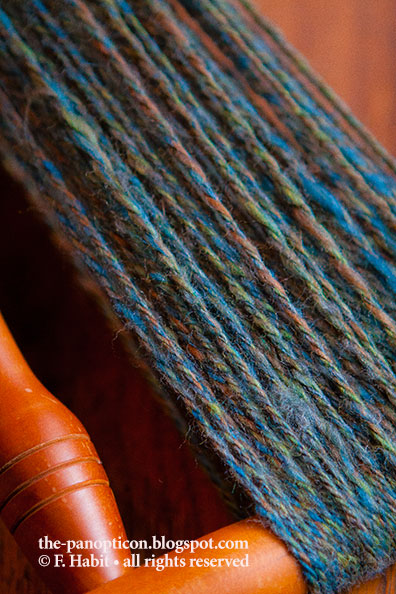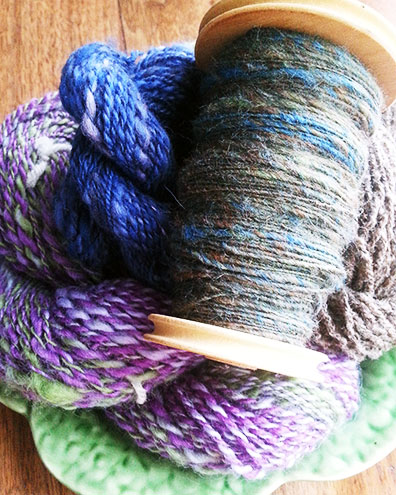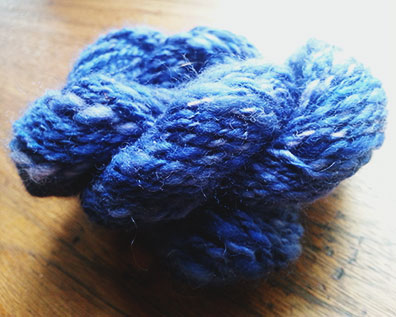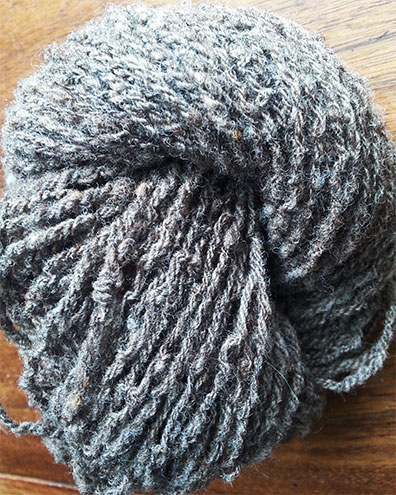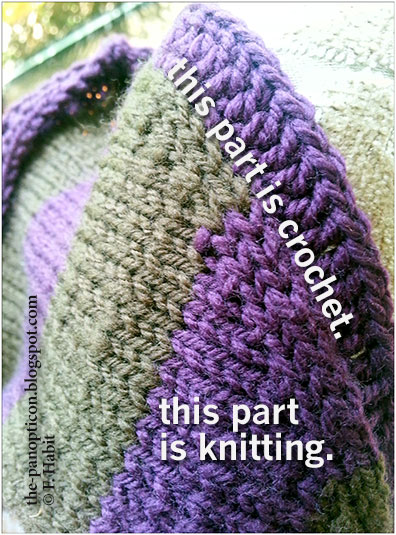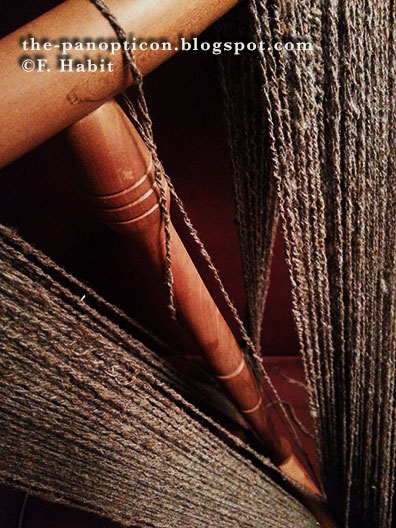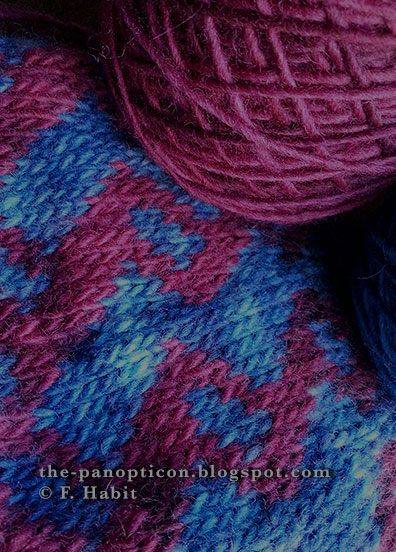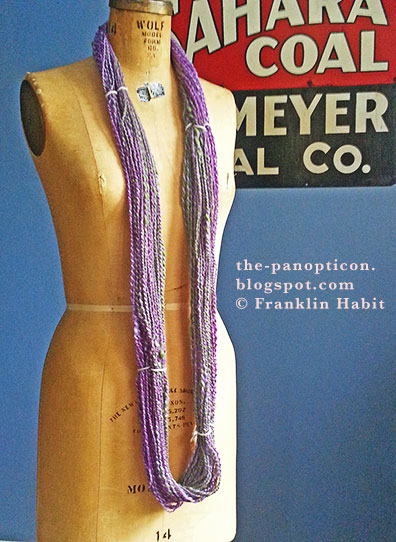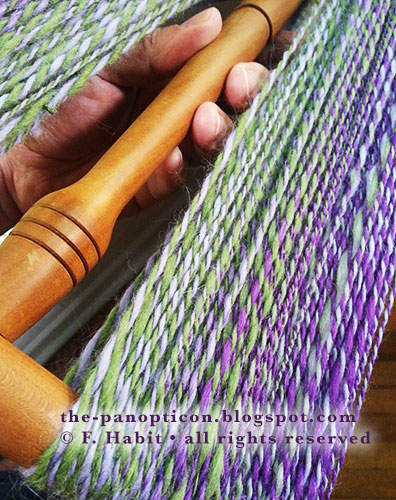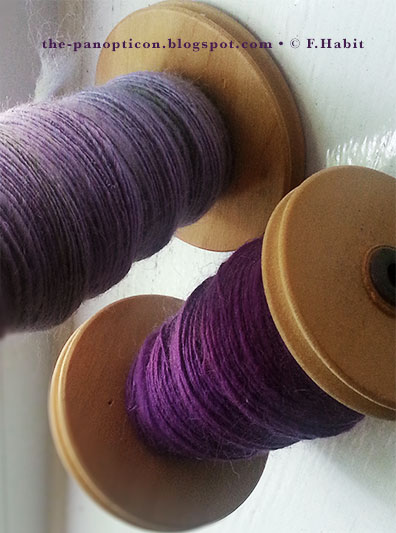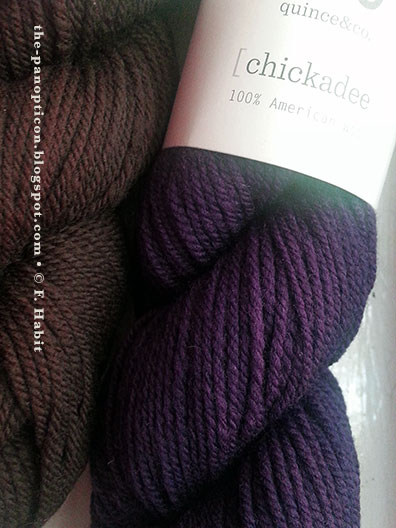The bathing drawers yarn is still in transit. I'm so excited about it that I've begun to palpitate slightly at the sight of delivery vans. Is my yarn in
that one? It could be! Is it? No? Well, what about
that one? Is that one for me? No? Yes? No?
This must be what a labrador retriever feels like every day.
I'm turning out a pattern, three articles, and two illustrations that have somehow all ended up with the same deadline; but a boy must take occasional breaks, and when I get one I've been spinning.
The Tour de Fleece 2013 is now well under way. After the angst of my bumbling beginning, I find to my surprise that I'm starting to enjoy myself.
Before I write about that, though, I want to meditate for a moment on the angst.
Let's be honest: Until you know what you're doing, spinning can be a rollercoaster to Hell. In knitting and crochet, you work one stitch at a time at your own pace. A novice knitter might spend an hour creeping across a row of twenty stitches, but he'll get there and nobody will know the difference.
Spinning, even when you're learning by way of park-and-draft, requires a certain minimum momentum. You nudge the treadle, the whorl goes round, and suddenly the twist starts to fly up your fiber like a zombie chasing a plump child dipped in butter. You either keep up, or you don't. At the beginning, more often than not you don't.
For me, this does not feel okay.
I can't tell you why I feel this way, or what's responsible for the feeling; but from very early childhood I've felt compelled to conquer every new challenge immediately and with minimal assistance. What's more, I've needed to not only pass but to pass with flying colors. When I don't the guilt is overwhelming.
This is not necessarily a bad thing. Without the desire to excel, it's easy to go nowhere and do nothing with your life. I'm not a fan of the current fashion for always telling children, "You did your best, and that's good enough." No, sometimes it's not good enough and you need to try harder. Life won't hand you a trophy just for showing up, and neither should the Little League.
On the other hand, the crying need for instant mastery has kept me from taking a lot of leaps that, in retrospect, might have led to adventure, joy, and prosperity. The funny thing about fear of failure is that it can keep you from trying
anything–which ultimately leads to failure.
That's why my Tour de Fleece nearly ended before it began, after I wrecked a twentieth of an ounce of Corriedale.
I've never spun from a batt before and I've never, ever spun with fiber as gorgeous as my Lunabudknits batt. You know what's especially horrible? I have a large bin in the workroom filled
entirely with spinning fiber, and most of it is gorgeous. Fiber artists have been more than generous to me–there's silk, cormo, wool, bison, and blends thereof, heaps of it. Mostly gifts. All unspun. Unspun because I have been terrified of messing it up.
Until I know how to spin well, I'm almost certainly going to mess it up. But I can't learn to spin well without first spinning badly.
You see my difficulty?
Perhaps it sounds familiar?
Progress
With your encouragement, however (for which I thank you) I have pressed forward. When I first got a spinning wheel I went slightly bananas with the book buying, so I have been consulting a three-foot stack of spinning books (good, bad, and indifferent) on the proper technique for woolen long draw.
Of course there are now also videos (good, bad, and indifferent) to be found online, and those have been enormously helpful.
My favorite piece of advice, commonly offered by all sources, is to handle the unspun fiber as though it were a little bird. Which it turns out does
not mean you scream, "Auuughhhh, yuck! Is that a
bird? What the hell is a bird doing in the
house? Does this thing have
fleas?" and drop it like it's hot.
Frankly, that's what I'd do if somebody stuck a little bird in my hand.
The beginning of my bobbin looks like utter poo, but it's gradually disappearing beneath layers of better and better woolen drafting.
Gloria in excelsis deo.
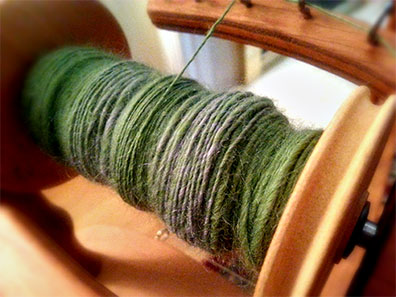
The first moment that I was able to treadle and simultaneously draft against the encroaching twist was a big moment for me; a "eureka" moment in which I actually shouted, "Eureka!"
Because my twist may not yet be consistent, but my pomposity is.
Here's a picture of me spinning, as proof that I am not having Dolores do all the work. (It was enough of a strain for her to take the picture.)


